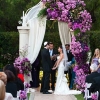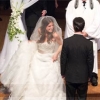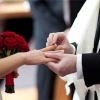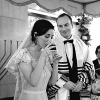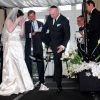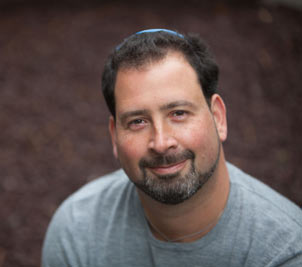Jewish Wedding Ceremony
The jewish wedding ceremony consists of two separate parts, Erusin, or Betrothal, and Nissuin, meaning Nuptials. While these two ceremonies were originally separated by a period of several months, today they have been combined into one.
Signing of the Ketubah
The Ketubah, or marriage contract, is one of the oldest Jewish wedding traditions, dating back two thousand years. Traditionally, the Ketubah is a legal document protecting the bride’s rights, and thus is the possession of the bride. In the progressive spirit, many couples today choose to have a Ketubah that is egalitarian and contemporary, expressing the bride and groom’s commitment to care for o [...]
Chuppah
The ceremony takes place under a Chuppah, or wedding canopy. It represents God’s sheltering presence in the lives of the bride and groom, as well as the new home that they will build together. The presence of family under the Chuppah, as well as its lack of walls, signify that their home will always be open to family and friends. [...]
Bedeken (Veiling of the Bride)
Legend has it that this tradition, which means “checking,” dates back to Biblical times, when Jacob was tricked by his father-in-law Laban. Jacob was presented with an already-veiled bride; he discovered only after the ceremony that she was not his intended bride, Rachel, but instead her sister, Leah. Often we will include Veiling of the Bride either immediately following the Ketubah signing, or [...]
Circling
Before the Bride and groom enter the Chuppah, traditionally the bride circles the groom seven times. Representing our egalitarian views of marriage, often modern couples choose to adapt this ritual by both bride and groom circling the other three times with the final circle done together hand in hand. Each circle represents one of the moral obligations with which we bind ourselves in marriage: “ [...]
Erusin (Betrothal)
This ceremony begins with the traditional blessing over a cup of wine. The cup of wine will be shared among the bride and groom and their parents. The second blessing sanctifies the bride and groom together in kiddushin, Hebrew for marriage, a word which is derived from the Hebrew for “holy.” According to Jewish law, the giving and accepting of an item of value in the presence of witnesses is [...]
Nissuin (Nuptials)
The second section of the wedding ceremony begins the Sheva Brachot, or seven benedictions, which are recited over a cup of wine. The blessings thank God for the fruit of the vine, the creation of the world, the creation of human beings, the perpetuation of life, the survival of the Jewish people, the joy of marriage, and the bride and groom’s happiness. [...]
Breaking of the Glass
At the conclusion of the ceremony, it is customary for the groom to break a glass. The breaking of the glass has several meanings. Some consider it a reminder of the destruction of the Temple in Jerusalem in the first century, for even at the height of personal joy, we must not forget the tragedies that our people have endured. Others explain that the fragile glass reminds us of the delicate natur [...]
After the Ceremony: Yichud and Seudat Mitzvah
Yichud Following the ceremony, the newly weds customarily spend a few minutes in a private room for yichud, which means “togetherness.” There, they will quietly share the excitement of their first moments together as husband and wife. Since the wedding day is often a whirlwind, these private moments of yichud often are the only private moments the bride and groom will share for the entire d [...]

